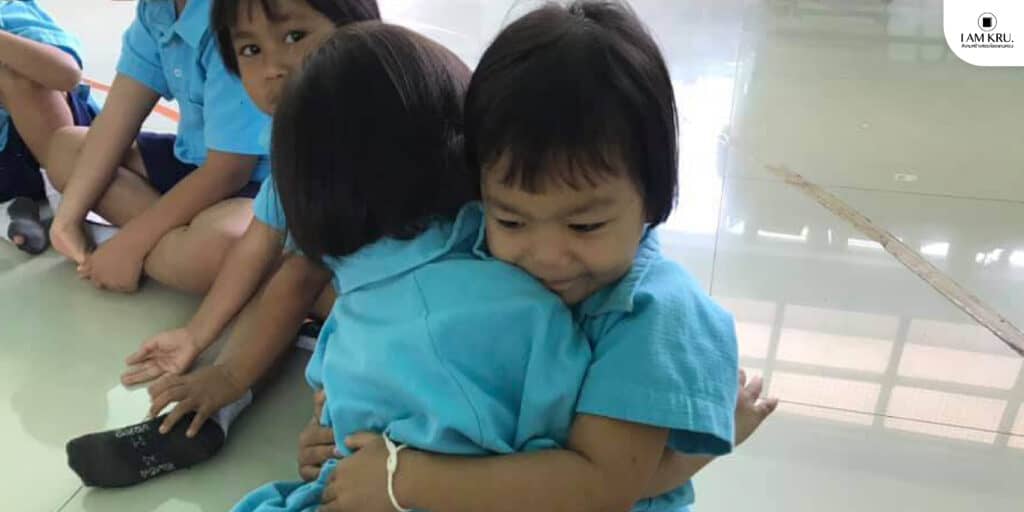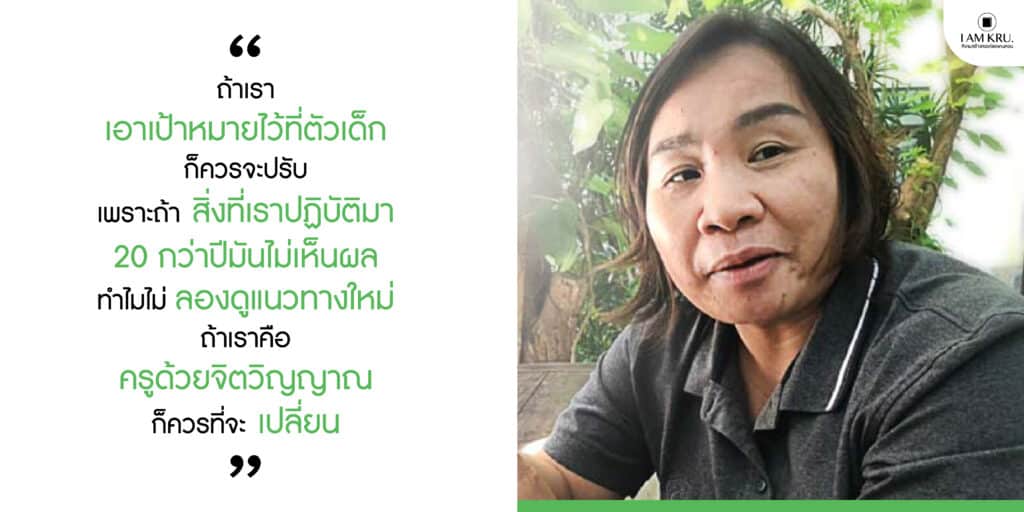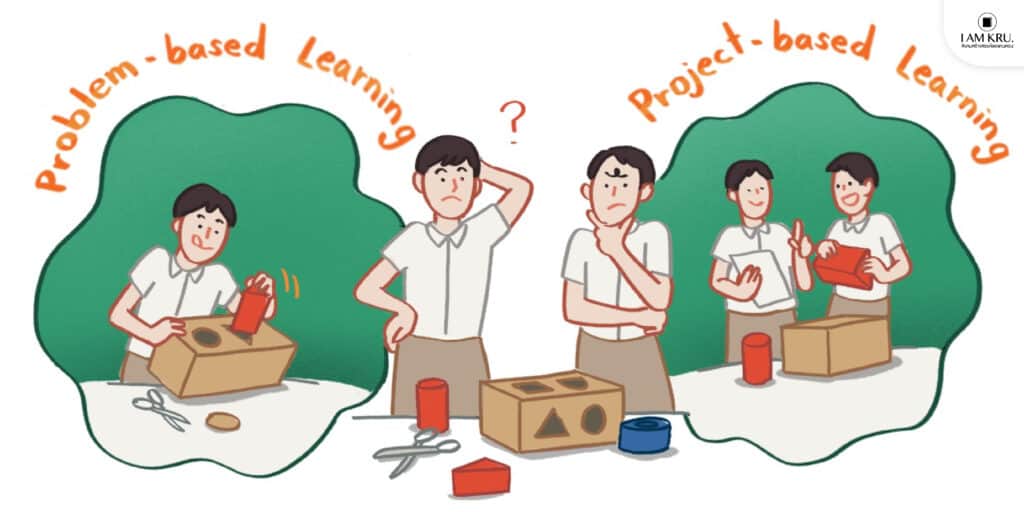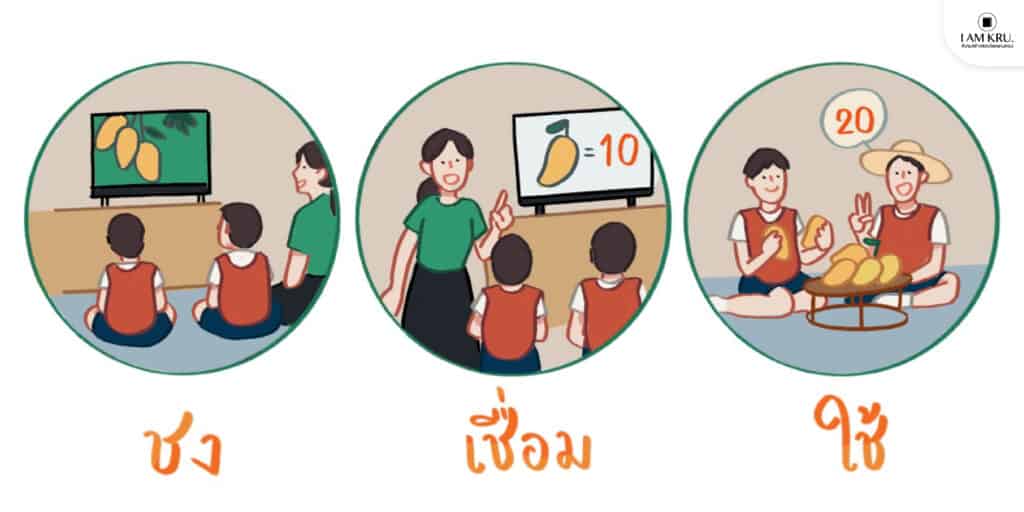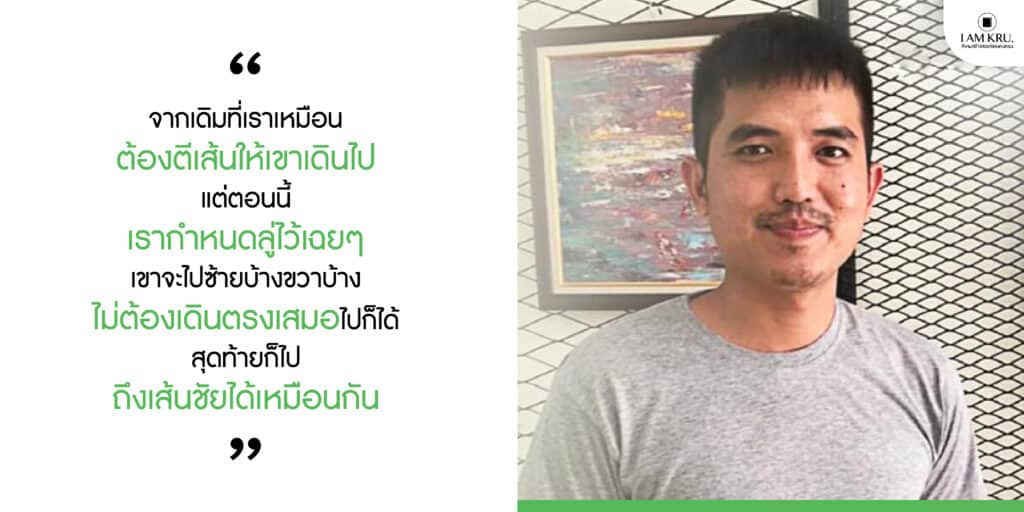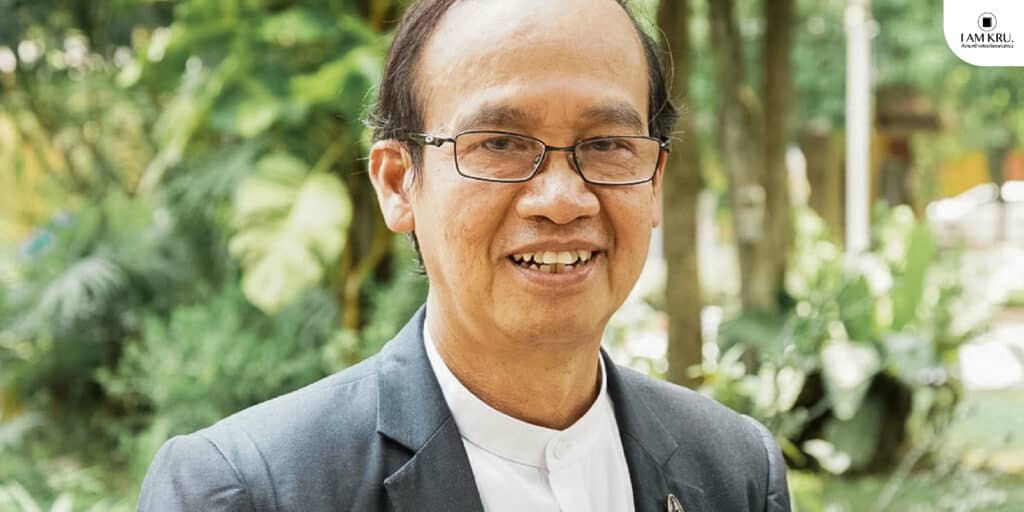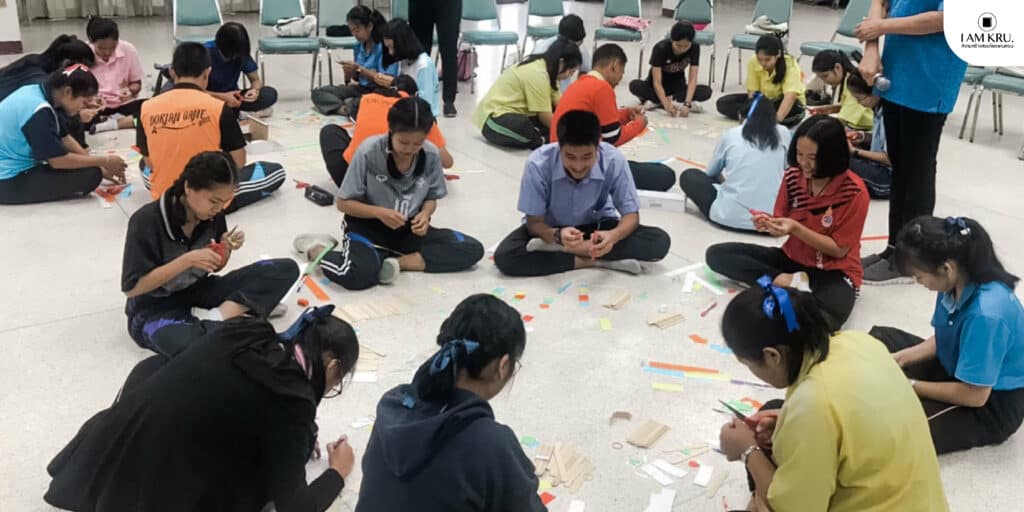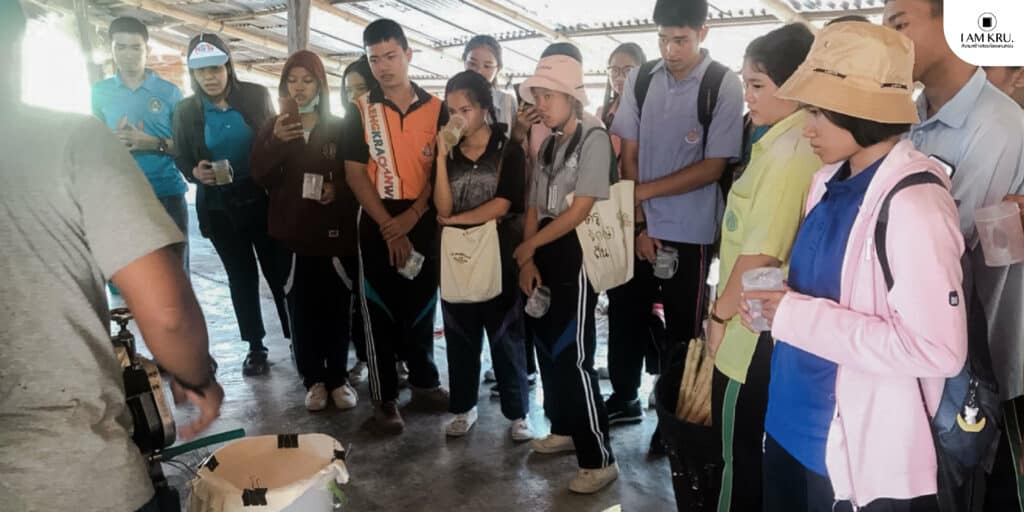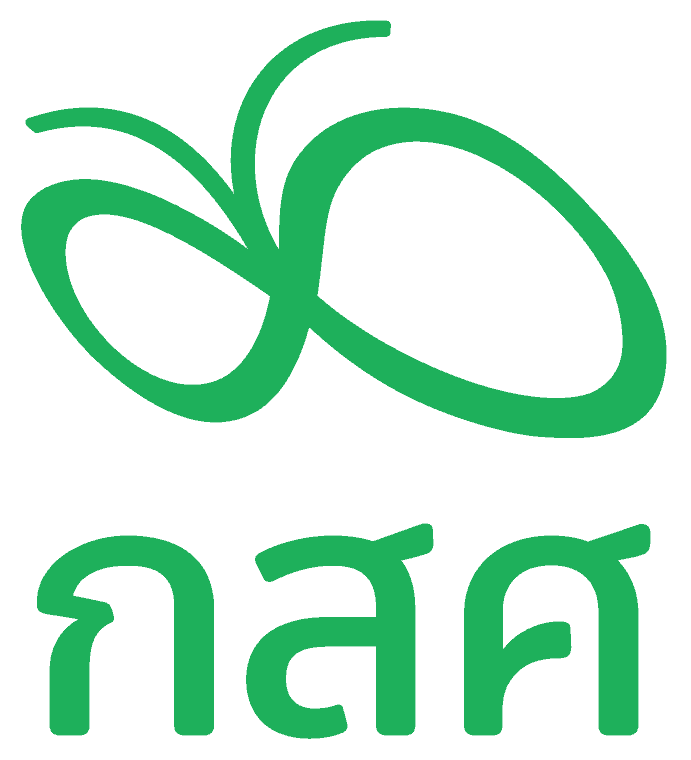Ban Suan Udom Wittaya School in Chonburi is transforming and developing education through the implementation of OECD tools in its unique learning processes.
“We witness a change in our students as they become more confident in expressing themselves. When they present their work, they do it with newfound courage because they have planned and overcome various challenges on their own. Importantly, they learn to understand and accept themselves and others,”
said Teacher Noi, Somporn Wichaiprasert, an expert teacher at the school.
Current education requires ‘adaptation’ to keep up with the rapid pace of technological advancements, emerging professions, and other global shifts. This significant educational shift in many countries emphasizes the enhancement of essential skills in children, such as creativity and critical thinking, which are integrated into the regular curriculum.
A vital question for Thailand is what kind of learning can expand children’s horizons beyond mere memorization.
The answer lies in the globally popular “process-oriented learning” that transforms students from passive receivers of information through listening, note-taking, and reading, into active participants, fostering active learning. The OECD has introduced this approach in Thailand, which not only significantly improves student scores but also equips them with lifelong essential skills.
What is OECD-style learning?
OECD-style learning refers to an educational process initiated by the Organisation for Economic Co-operation and Development (OECD), which has now been adopted by a network of more than 70 countries worldwide. This approach develops systematic instructional tools that place the student at the center of the educational experience. The process is designed to make children live smarter, enhancing their ability to choose future professions, allowing them to dream beyond traditional confines.
The OECD’s process-oriented tools aim to improve analytical thinking, creativity, and collaborative work skills
through a six-step workflow:
- Pre-test to assess thinking skills before starting learning.
- Generate motivation to learn, such as taking students to explore the surrounding community before classes begin.
- Plan learning experiences by integrating curriculum content with children’s interests.
- Manage learning by engaging students in hands-on activities and allowing them to create knowledge independently, including presenting their completed work.
- Enable students to self-assess, while teachers provide feedback.
- Review the entire process, asking questions and reflecting between teachers and students to improve future teaching processes and help students apply their knowledge further.
Many schools in Thailand have already successfully implemented this methodology, leading to improved teaching efficiency, transforming teachers’ roles from instructors to facilitators, and increasing students’ appreciation for the value of education.

Ban Suan Udom Wittaya School in Chonburi: A Successful Example of OECD Learning Processes Implementation.
Ban Suan Udom Wittaya School in Chonburi is one of the schools that has successfully implemented the OECD learning processes to improve the quality of education. The students of this school have achieved higher test scores and exhibited greater academic progress than many other schools worldwide using the same process. This has attracted the attention of teachers from abroad, many of whom have traveled to observe the school’s unique teaching methods that enable students to excel beyond their peers.
“Teacher Noi”, or Somporn Wichaiprasert, a specialized science teacher for the eighth grade, has spearheaded this approach at Ban Suan Udom Wittaya School. Starting with OECD training in 2016 to learn process-oriented teaching techniques, Teacher Noi has since translated these methods into practice, initially implementing the OECD teaching process with eighth-grade students in science and mathematics, alongside the standard curriculum. Students gain knowledge through hands-on experience, making the classroom a place of both education and enjoyment.
For example, in a lesson about changes in the Earth’s crust, instead of focusing on memorization, the students are encouraged to use analytical skills by constructing a model volcano. This approach allows students to visualize and learn from a tangible, real-world object.
“From the beginning, we have the children plan how to build the volcano and decide what materials to use. They do the thinking; we only provide guidance. They assign roles within the group, someone brings glue, another brings paper. We just prepare the materials for them. Consequently, the results are diverse: some groups use papier-mâché, others use old play dough. We also incorporate STEM (an educational approach integrating knowledge across the four disciplines of science, technology, engineering, and mathematics), such as calculating the volume of substances, whether using a brand bottle or a yogurt bottle, to determine the volume before conducting the chemical reaction. Some groups use baking soda, Eno, or soda,”
said Teacher Noi.
In mathematics, teaching methods emphasize practical application. Students measure the height of flagpoles and other objects, comparing them, and using tools for real-life applications. This hands-on approach engages students and makes them feel that they can apply what they learn in actual situations.
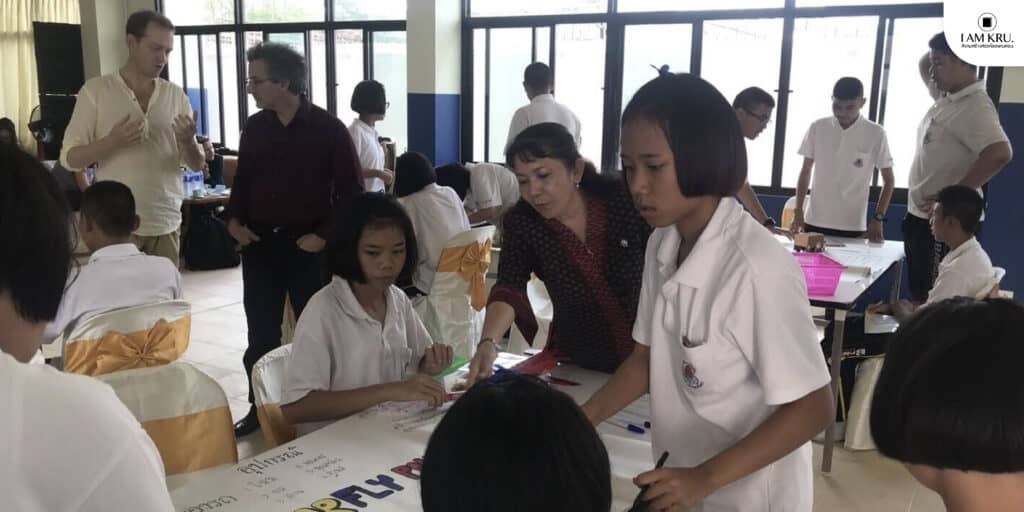
Technology and the OECD Process
Before students can engage in activities, they must possess certain qualities: curiosity and the ability to research independently. Understanding the reasons behind processes makes learning more enjoyable for students. Hence, Teacher Noi added a “Research” phase to the OECD process. Teacher Noi explains that he teaches students to search for information using iPads provided by the Institute for the Promotion of Teaching Science and Technology (IPST). For instance, in the lesson about volcanoes, students research how volcanoes form and how they can simulate one. They must find information and reason out why things happen the way they do.
Teacher Noi stated that this teaching style requires more effort than traditional methods. The teacher must observe every part of the student’s process, from the initial research to the creation of their work. The teacher’s role is to stimulate thinking, mediate when students have differing ideas or debates, and provide suitable reasoning for each student. This method is not only about delivering content but also about guiding students to become independent thinkers and learners, leveraging technology to enhance their research and analytical skills.
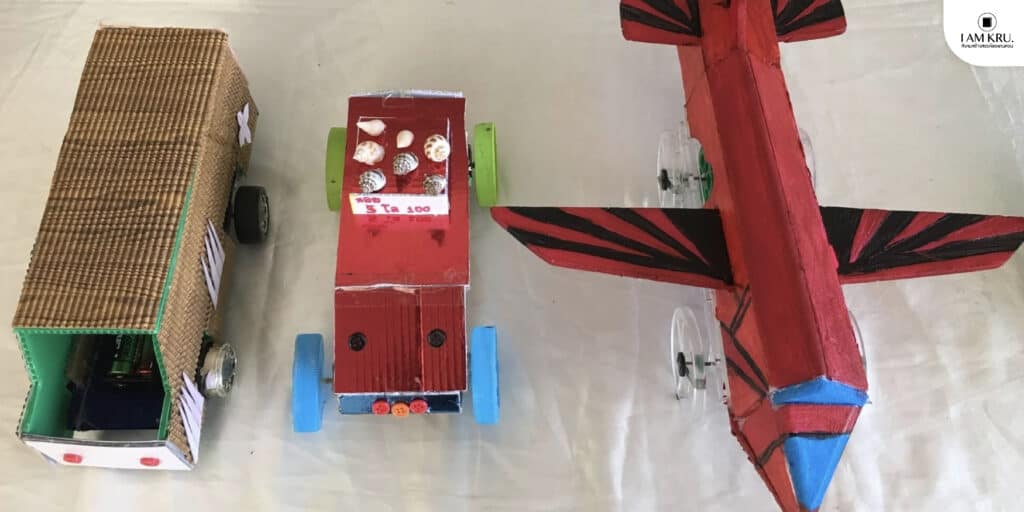
New Assessment Method: Self-Evaluation
The OECD process incorporates a form of self and group evaluation, allowing students to become familiar with assessing themselves at different levels and to recognize areas for self-improvement. In the classroom, once an activity is completed, students use a spider graph to rate themselves on a scale of 1-5 on various predetermined criteria such as responsibility, aesthetics, creativity, or they may choose their topics for assessment.
Regarding students achieving scores of statistical significance above the OECD average, Teacher Noi finds it challenging to pinpoint the exact reason. However, one possible explanation could be the enhancement of analytical thinking skills. Teacher Noi teaches students to think critically, not just to learn from textbooks. Students conduct their research, and during tests, they encounter questions that resemble real-life problems rather than traditional exam questions. For example, when asked why the elderly are slower than middle-aged people, the expected descriptive answer should acknowledge not only age and disease but also consider points like the degeneration of bones, reflecting a deeper understanding and more deliberate thought process from the students.
“We take pride in our students and the positive changes they’ve undergone. We want the best for them, which requires activities that are well-prepared and engaging. Teachers need to be ready, prepared with materials, and willing to put in more effort. We must inspire, encourage, and use appropriate language. Teenagers don’t respond well to harsh words, so we must be tactful in our approach to foster cooperation. We need to speak their language, not as old-fashioned teachers who only command and control, but as someone who listens and values their thoughts,”
Teacher Noi asserted.
More Than Just Higher Scores: Lifelong Skills Acquired
The benefits students reap from the OECD-style educational process extend beyond improved academic scores. Students cultivate analytical thinking and creativity by initiating and creating their work. Teacher Noi believes this to be of utmost importance because these skills empower students to excel in other areas. When encountering information from various sources, they can critically filter it before deciding to believe and act on it.
Another skill that students develop is the ability to work collaboratively. Success is not solely based on knowledge; it also depends on the ability to coordinate and share responsibilities with others. This process instills a sense of accountability that students can apply when working with others in the future.
“The changes we observe are significant. We see our students become more assertive when they present their work. They automatically become bolder because they have planned and solved problems independently. The essential thing is they learn to see and accept themselves and others, because our assessments are based on rubrics, not traditional exam questions. The criteria include group work, sacrifice, unity—areas where our students might not naturally excel and tend to be average or below. Achieving good scores in these areas helps to improve their overall performance,”
Currently, the school cannot apply this method to all subjects due to the existing standard curriculum; it’s an adjunct activity. However, in the future, they plan to integrate this process into a wider variety of content, other subjects, and different grade levels.
The OECD process has expanded to other schools across the region and the country, with continued success evidenced by student presentations such as art and craft exhibitions, project competitions, and other displays of student work. These events are increasingly frequent each year, showcasing work that stems from a “process” initiated by the students themselves, guided, but not dictated, by their teachers.
80
Writer

- เอื้อการย์ โรจนจิรไพศาล (มะแม้ว)
- นักเขียนผู้หลงรักการผจญภัยในเมือง ปรัชญาในชีวิตจริง และการไป Cafe Hopping ทั่วทุกมุมเมือง
